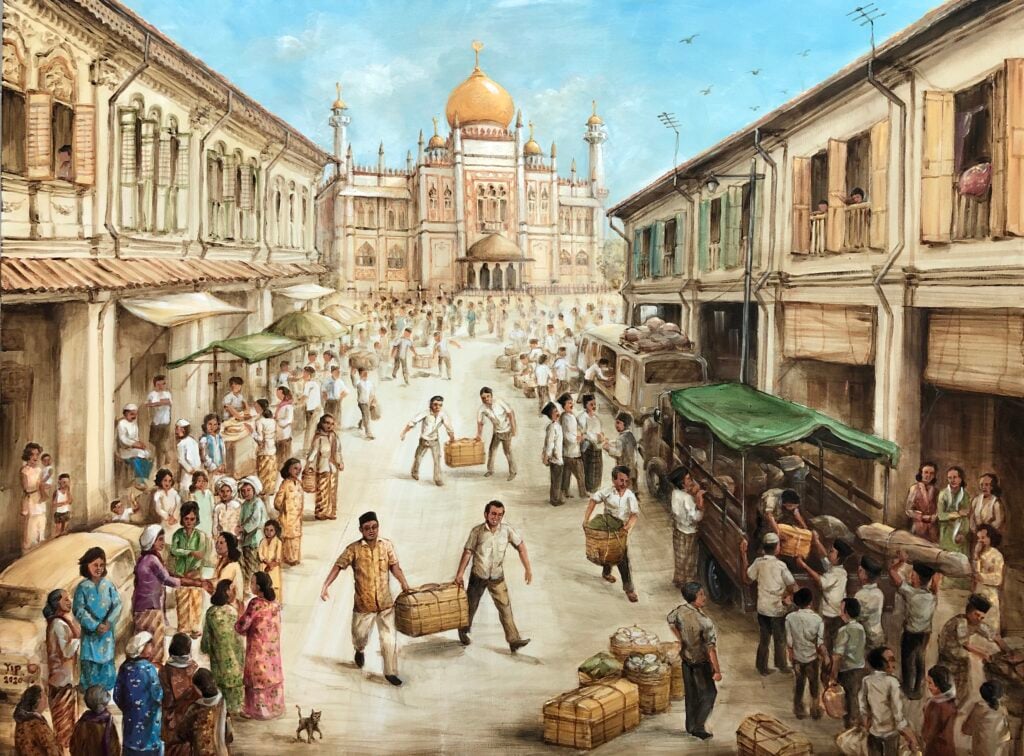This acrylic-on-canvas painting (122cm x 91cm) depicts a scene of preparation for the Haj at Kampong Glam in 1972.

Before the early 80s when commercial flights were less accessible, most pilgrims would take a two-week steam ship journey from Singapore to Mecca. The whole pilgrimage duration would be around 2-4 months. Kampong Glam was a centre for pilgrims to gather and prepare for the Haj. Many Khaji shops lined Haji Lane, thus its name. The shops were like travel agencies, as well as boarding houses for pilgrims from neighboring countries transiting through Singapore.
I painted this busy scene at Bussorah Street, blessed by the grand Masjid Sultan (1824, reconstructed in 1928). The street was then filled with residents, cottage industries and push-cart hawkers. Based on old archived photos of the Haj preparation, I composed this scene of men loading luggages onto trucks, and ladies bidding farewell for a safe journey. In those days, pilgrims had to bring cooking and eating utensils, food and mats along.
Can you spot the Chinese lady at the five-foot way? Kampong Glam, like Little India and Chinatown, was not mono-ethnic. Many other races lived and set up businesses there too. There were even Chinese shops that carved Muslim tomb-stones!
Kampong Glam was also heavily influenced by Middle Eastern culture due to early Arab traders living and working in the area. Thus, several streets in Kampong Glam were named after cities in the Middle East, such as Bussorah Street (Iraq), Muscat Street (Oman) and Kandahar Street (Afghanistan).
The 2020 Haj season is expected to be a quieter one due to COVID-19. Nevertheless, we wish all Pilgrims a blessed journey and all Muslims a blessed Hari Raya Haji.

